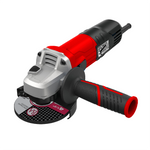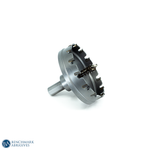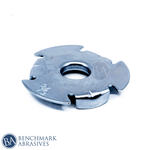
What is PSA Pad?

Pressure-Sensitive Adhesives (PSA) form the backbone of many modern fastening systems, including the simple yet effective PSA sanding pad. Unlike traditional glues, PSA creates an instant bond with just pressure, making abrasive disc changes quick and convenient. Understanding the underlying chemistry, the various construction types, and the comparison to other systems is key to selecting the most reliable and cost-effective solution for your sanding job.
What is a PSA Sanding Pad?
A Pressure-Sensitive Adhesive (PSA) sanding pad (or disc) is an abrasive product that features a single-sided coating of adhesive. When the adhesive is pressed onto a dry, clean surface, it instantly forms an adhesive bond.
The pressure (rubbing) applied during application directly affects bond strength; no solvent, water, or heat is required to activate the adhesive. This bonding depends on two essential characteristics:
- Flow (Viscous): The adhesive is soft enough to flow and "wet" the surface (adherend) to form molecular contact.
- Resistance (Elastic): The adhesive is tough enough to resist flow when stress (like sanding friction) is applied to the bond, giving it shear and peel resistance.
The Chemistry of PSA: Comparing Rubber, Acrylic, and Silicone Adhesives
The performance of a PSA disc—specifically its initial tack and temperature tolerance—is determined by its chemical formulation.
| Adhesive Type | Key Characteristics | Best Application | Heat/Solvent Resistance |
| Rubber | Most economical, offers quick initial tack (quick stick). | General-purpose or low-cost jobs. | Poor (Not suggested for high heat). |
| Acrylic | Better overall strength, resistance to UV/solvents. | Stronger bonds, higher temperatures. | Good—it can withstand temperatures greater than rubber. |
| Silicone | It adheres to silicone surfaces effectively. | Extremely high heat applications. | Excellent (Highest temperature resistance). |
PSA Product Formats and Construction Types
In manufacturing, PSA materials are created in various formats, each serving a specific industrial purpose:
- Single Coated: Only one side of a material is covered with an adhesive.. A silicone-coated release liner protects the adhesive. This is the common format for single sanding discs or rolls.
- Transfer Tape: A release liner is covered with an unsupported mass of adhesive film. These tapes are often very thin and provide excellent conformability to irregular surfaces.
- Double Coated: A carrier (like plastic film or tissue) is coated with PSA on both sides.
PSA vs. Hook and Loop Sanding Discs: What to choose
When choosing abrasives for power tools like orbital or rotary sanders, the decision often boils down to PSA versus the Hook and Loop system (often called Velcro).
| Feature | PSA Disc (Pressure-Sensitive Adhesive) | Hook and Loop Dics |
| Disc Replacement | Permanent bond (slower change-out) | Quick repositioning/change-out |
| Bond Firmness | Firmer, flatter bond (no cushioning) | Cushioned (pad interface layer) |
| Ideal Use | High-precision, heavy stock removal, lower volume changes. | High-volume, frequent grit changes, blending. |
| Cost | Generally cheaper per disc. | Higher cost per disc due to backing. |
Why Choose PSA? PSA provides a firmer, flatter bond because there is no interface layer, which is ideal for sanding jobs requiring high precision or heavy-duty stock removal, where the disc will remain on the pad for extended periods. It is also generally cheaper per unit.
Why Choose Hook and Loop? H&L discs are preferred for jobs requiring frequent grit changes. The cushioned interface makes them forgiving for blending, and the ability to quickly reposition or swap discs saves considerable downtime, making the higher disc cost worthwhile for high-production work.
Conclusion
Pressure-sensitive adhesive sanding discs offer a fast, cost-effective, and convenient method for mounting abrasives on various sanding equipment. Whether you select a rubber-based adhesive for economy or a ceramic-coated disc with an acrylic adhesive for high heat and strong bonding, understanding the material science behind the PSA ensures you achieve the most reliable bond and the smoothest finish for your grinding, sanding, and finishing jobs.



































































